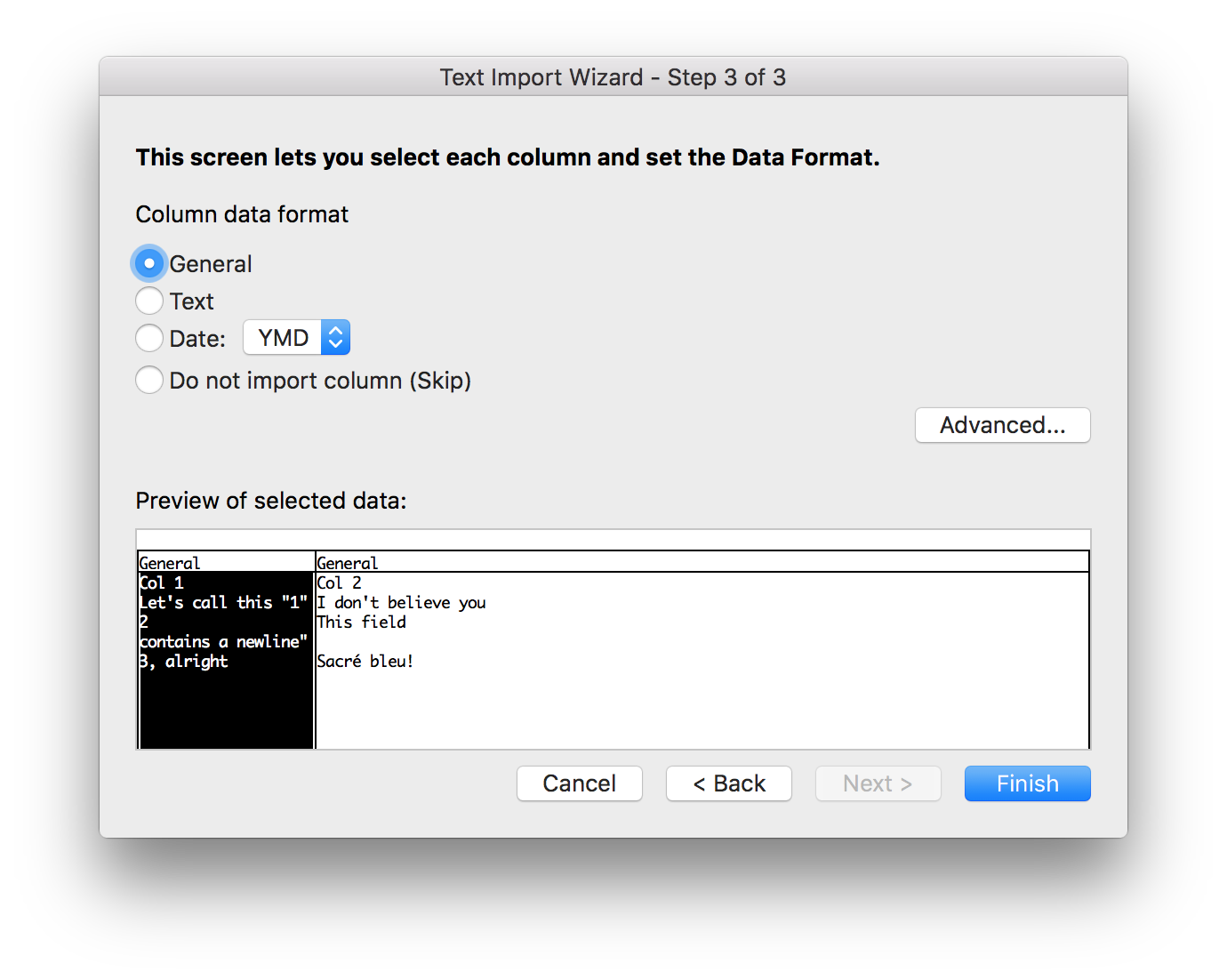

EXCEL FOR MAC CSV UTF 8 SERIES
In memory or on a drive, computer files are not characters or symbols, but merely a series of magnetic bits that exist in only one of two states, which can be symbolized as 1 or a 0. EncodingsĮncodings are the final and most complex reason for this profusion of text-file formats.
EXCEL FOR MAC CSV UTF 8 WINDOWS
csv file formats, one uses CR (CSV UTF-8) and three use CR LF (Comma Separated Values, MS-DOS Comma Separated, and Windows Comma Separated). txt file formats on the MacOS version of Excel, two use CR (MS-DOS Formatted Text and Tab Delimited Text) and two use CR LF (UTF-16 Unicode Text and Windows Formatted Text). Some of the file options in Excel reflect the different line endings to ensure Mac-Windows compatibility. Applications are better at recognizing these variations today than they were a decade ago. txt files created on a Mac, and vice versa. For example, some Windows applications cannot properly read.
EXCEL FOR MAC CSV UTF 8 SOFTWARE
These line endings matter because software may not have be written to recognize all of these as valid.

Later, Windows continued using CR LF, but MacOS switched to LF once it became a UNIX operating system (starting with OS X 10.0). Unix systems used LF, Mac used CR, and DOS used CR LF. In the early days of Mac and DOS computers, different operating systems used different (invisible) characters at the ends of lines of data. On a typewriter, you would typically do both simultaneously (CR LF), but you could choose just one. One could also advance to the next line, and this was known as Line Feed (LF). On a typewriter, one could simply move the carriage to the left, which would return the typing point to the beginning of the same line, and this was known as a Carriage Return (CR). How early computers handled what to do at the end of a line, and what character to put there, stemmed from typewriters and printers of the day. Some of these options arise from the ways in which the end of a line is specified in a text file. It is important to realize that, regardless of their suffix, all of these are plain-text files that can be read and modified in any text editor. txt file: UTF-16 Unicode Text (.txt), Tab Delimited Text (.txt), Windows Formatted Text (.txt), and MS-DOS Formatted Text (.txt). Likewise, the macOS version of Excel provides four ways of exporting a. csv file: CSV UTF-8 (Comma delimited) (.csv), Comma Separated Values (.csv), Windows Comma Separated (.csv), and MS-DOS Comma Separated (.csv). At least on macOS, Excel offers four ways to export a. Opening a file in a text editor should make it clear what is being used to delimit columns. Some applications use other delimiters, such as semicolons or spaces. csv suffix will have the columns separated by commas, and those with a. When exporting a table from Excel, there are two main options for how columns will be specified in the text file, and these are known as delimiters. These options come from three main sources: delimiters, line endings, and encodings. At first, there are what looks like a bewildering number of options. Trying to save an Excel file as a text file reveals that things are a bit more complicated. At the face of it, a text file would seem to be the simplest thing, just a series of characters.


 0 kommentar(er)
0 kommentar(er)
